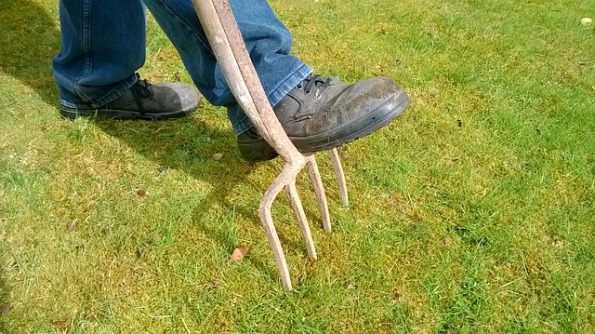
There’s nothing better than lying on a lush green garden lawn in the summer months - a green space for you, your children and even your cats and dogs to relax on. But how exactly do you go about creating a lush green lawn and how do you avoid the dreaded brown patches and lumps that we so often see?
No one lawn is the same
Every garden is different and the soil composition in your garden may require you to treat it in a very particular way. The best way to determine the right diet for your lawn is to perform a soil PH test which will tell you how acidic or alkaline it really is. This will then help you to know whether to purchase lime which can raise the PH or split pea sulphur which can lower the PH. Soils with a high clay content can benefit from organic matter like sand and gypsum.
Feed your lawn
Just like me and you, your lawn gets very hungry when it hasn’t eaten for a while. By using natural organic fertilisers you can give your soil and grass all the nutrients it needs to be strong, healthy and resistant to diseases. You can pick up organic fertiliser from any good garden retailer.
Sharpen your blades
When was the last time you sharpened the blades on your mower? If you can’t remember then that’s a good sign that it needs doing. Dull blades can scuff and tear up your lawn and leave it susceptible to diseases which can ruin it. So remove your blades and then use an angle grinder or file it until it’s noticeably sharper. Of course it may be worth seeking out an expert to help you with this if you’ve never done it before.
Leave grass clippings where they are
Another good tip for topping up your garden nutrients is to leave grass clippings where they are instead of raking them away. Cuttings help to keep out weeds and acts as a booster for your organic fertiliser.
Water heavily but not too often
The roots of grass seed only grows as deep as it needs to. So if you frequently water your garden lawn the roots stay quite shallow in the ground. The solution is to water less frequently, but twice as much. So water your lawn and then come back 1-2 hours later and give it another spray.
Dealing with patches
If you’ve started to see brown patches in your lawn then you need to act quickly. Grass turns brown when it is struggling to get enough nutrients i.e. food and water. There are a few different reasons why this might be happening. It could be caused by a heat wave with little rain fall in which case you should water it yourself or it might be that there are weeds zapping away all your lawn’s food, in which case you should reach for your gardening gloves and begin raking them up.
Do you enjoy gardening? Do you have any special tips on growing a lawn or creating a garden sanctuary? Tweet us @TimeForYouGroup and let us know, or alternatively visit us at https://timeforyou.cleaning/uk/ for more tips and advice.